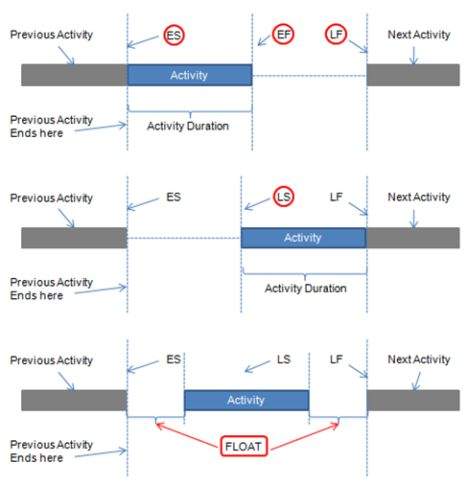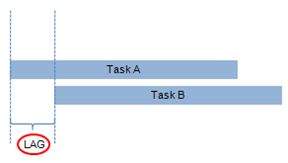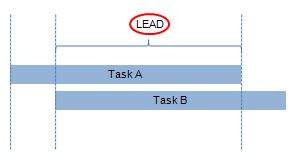
- Project Management Concepts
- Project Management Home
- Activity Based Costing
- Agile Project Management
- Basic Management Skills
- Basic Quality Tools
- Benchmarking Process
- Cause and Effect Diagram
- Change Management Process
- Communication Blockers
- Communication Channels
- Communication Methods
- Communication Models
- Communications Management
- Conflict Management
- Crisis Management
- Critical Chain Scheduling
- Critical Path Method
- Decision Making Process
- Design of Experiment
- Effective Communication Skills
- Effective Presentation Skills
- Enterprise Resource Planning
- Event Chain Methodology
- Extreme Project Management
- Gantt Chart Tool
- Just-In-Time Manufacturing
- Knowledge Management
- Leads, Lags and Floats
- Management Best Practices
- Management Styles
- Management by Objectives
- Monte Carlo Analysis
- Motivation Theories
- Negotiation Skills
- Organizational Structures
- PERT Estimation Technique
- PRINCE2 Project Methodology
- Pareto Chart Tool
- Powerful Leadership Skills
- Process Based Management
- Procurement Documents
- Procurement Management
- Project Activity Diagram
- Project Charter
- Project Contract Types
- Project Cost Control
- Project Kick-off Meeting
- Project Lessons Learned
- Project Management Methodologies
- Project Management Office
- Project Management Processes
- Project Management Tools
- Project Management Triangle
- Project Manager Goals
- Project Portfolio Management
- Project Quality Plan
- Project Records Management
- Project Risk Categories
- Project Risk Management
- Project Scope Definition
- Project Selection Method
- Project Success Criteria
- Project Time Management
- Project Workforce Management
- Project Management Softwares
- QC and QA Processes
- RACI Chart Tool
- Recognition and Rewards
- Requirement Collection
- Resource Leveling
- Staffing Management Plan
- Stakeholder Management
- Statement of Work (SOW)
- Stress Management Techniques
- Structured Brainstorming
- Succession Planning
- Supply Chain Management
- Team Building Program
- Team Motivation
- The Balanced Scorecard
- The Halo Effect
- The Make or Buy Decision
- The Rule of Seven
- The Virtual Team
- Total Productive Maintenance
- Total Quality Management
- Traditional Project Management
- Work Breakdown Structure
Leads, Lags and Floats
Introduction
When it comes to project activity management, activity sequencing is one of the main tasks. Among many other parameters, float is one of the key concepts used in project scheduling.
Float can be used to facilitate the freedom for a particular task. Let's have a look at the float in detail.
Float
When it comes to each activity in the project, there are four parameters for each related to the timelines. Those are defined as:
Earliest start time (ES) - The earliest time, an activity can start once the previous dependent activities are over.
Earliest finish time (EF) - This would be ES + activity duration.
Latest finish time (LF) - The latest time an activity can finish without delaying the project.
Latest start time (LS) - This would be LF - activity duration.
The float time for an activity is the time between the earliest (ES) and the latest (LS) start time or between the earliest (EF) and latest (LF) finish times. During the float time, an activity can be delayed without delaying the project finish date. In an illustration, this is how it looks:

Leads and Lags
Leads and Lags are types of float. Let's take an example to understand this.
In project management, there are four types of dependencies:
Finish to Start (FS) - Later task does not start until the previous task is finished
Finish to Finish (FF) - Later task does not finish until the previous task is finished
Start to Start (SS) - Later task does not start until the previous task starts
Start to Finish (SF) - Later task does not finish before previous task starts
Take the scenario of building two identical walls of the same house using the same material. Let's say, building the first wall is task A and building the second one is task B. The engineer wants to delay task B for two days. This is due to the fact that the material used for both A and B are a new type, so the engineer wants to learn from A and then apply if there is anything to B. Therefore, the two tasks A and B have a SS relationship.
The time between the start dates of the two tasks can be defined as a lag (2 days in this case).

If the relationship between task A and B was Finish to Start (FS), then the 'lead' can be illustrated as:

Task B started prior to Task A with a 'lead.'
Conclusion
For a project manager, the concepts of float, lead and lag make a lot of meaning and sense. These aspects of tasks are important in order to calculate project timeline variations and eventually the project completion time.